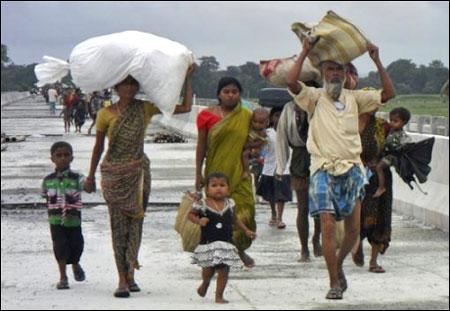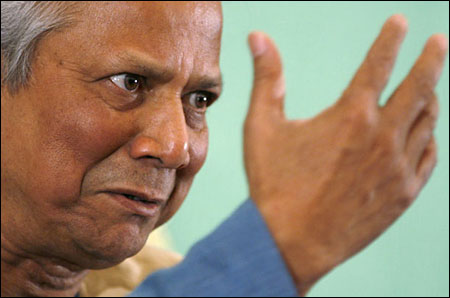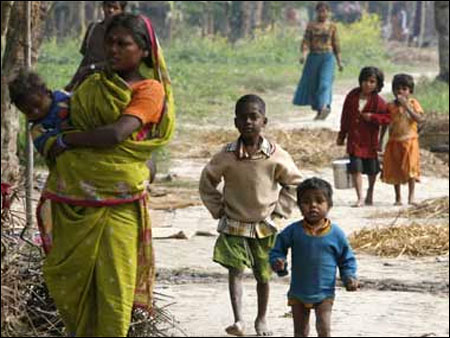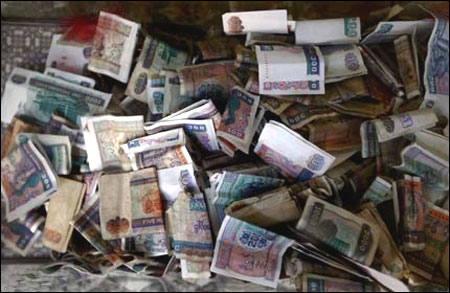
There is urgent need to examine possibilities of a common economic and ecological zone on the sub-continent. In the absence of mechanisms to make such a zone functional and effective, economic and environmental distress will continue to cause migration. And migration is more than likely to fuel ethnic tensions.
Some form of South Asian union is not a new idea. H T Parekh, who is remembered as the doyen of capital markets in India and who founded HDFC, favoured such sub-continental links back in the 1970s. More recently, in 2009, this was the main theme of Mohammed Yunus' speech when he addressed both houses of the Indian Parliament.
Click on NEXT for more...
Rather than passively imagining what South Asia will be like fifty years from now, Yunus said, let us actively engage with what we would want it to be.
It is the nature of dreams to seem impossible, said Yunus, adding that we cannot expect analytical minds to turn dreams into reality. Analytical minds are trained to deal with hard information that is now available and more focused on the obstacles that lie ahead.
Fortunately, Yunus believes, 'we have entered into an age when dreams have the best chance to come true.'
Such optimism is partly driven by the staggering scale of what lies ahead. For example, migration out of Bangladesh into Assam or other parts of India, is not just driven by poverty. It is also caused by accelerating environmental distress.
If current predictions about the rise in sea level due to climate change turn out to be even partly true - large parts of Bangladesh and some parts of coastal India will be inundated by the sea. Distress migration will then happen on a scale involving millions of people.
Click on NEXT for more...

Trying to tackle shifts of this magnitude through conventional diplomacy or 'foreign relations' might be futile. But some form of economic union could possibly provide more effective answers.
Yunus' visionof a well-functioning South Asian Union by the year 2030 includes the following. To quote from his speech before the Indian Parliament: 'There will be no visas required, no customs officials limiting travel among the South Asian countries. There will be a common flag, along side our national flags, a common currency, and a large area of common domestic and international policies.'
On the face of it this may not seem like such a good idea -- since the European Union is facing so many probelsm with its common currency. But, the most significant and ambitious part of Yunus' dream is for such cooperation is to make South Asia the first poverty-free region of the world.
How this might be possible is a complicated matter. But at the moment the answers are sought entirely within national boundaries. Removing barriers to trans-border trade and business could help foster growth and employment but will not in itself address the problem of poverty. more easy.
Click on NEXT for more...

So Yunus, emphasised that it would be for businesses and governments to work together to ensure that there is 'a reliable state-of-the-art healthcare system that will provide affordable care for all people.' And, 'a robust financial system to provide easy access to financial services to every single person in South Asia.'
The crux of Yunus' dream, which relates to his big passion, is that by 2030 'we'll have a range of creative and effective social businesses working throughout South Asia to solve all the remaining social problems.'
Sure this looks impossible today. But to refuse to even try for such changes would mean that we give up even a fighting chance for a future that is different from the strife and turmoil that threaten our present.
Let us look at some signs of hope. At the cultural level, as expressed by films , literature and music, the basis of such a union already exists. This reality is also the basis of many citizen level dialogs and exchange visits - particularly between Indian and Pakistani peace activists.
However, these long standing activities are not enough. The most crucial work that is required must be undertaken by the business sector and governments.
Click on NEXT for more...
In the current model of economic growth trans-border trade will be seen as the primary, or even sole, incentive for such a union. But that won't work. The key shift which is required is: one, to work jointly on economic shifts that not just fight poverty but facilitate universal well-being; and two, treat this sub-continent as a contiguous ecological zone.
For any of this to actually happen much will depend on innovative think tanks, like the recently launched Gateway House, in Mumbai, which works at the interface of business community and international relations. But the biggest responsibility rests with far-sighted business people, policy makers and politicians.
In the short run the culprits of communal tension and violence must be tackled as a law and order issue. But if they are to be defeated in long run we must do more than reject their divisive ideas.
The best insurance for the future is to ensure that people are fully employed and not pushed into the arms of communalists because they are compelled to fight for crumbs of a depleted pie of economic opportunity.